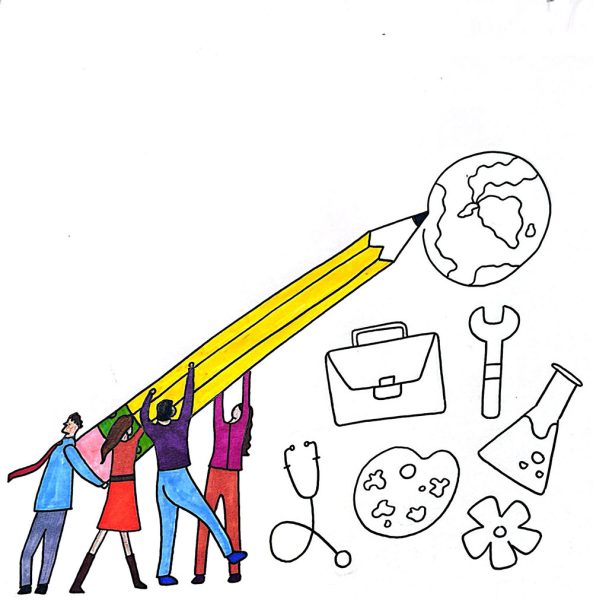Ohio Considers New Temps Rules
If House Bill 293 passes and is signed by the Governor, teens will wait six months longer to get their licenses.
Teens in Ohio may have to wait an extra six months to get their temporary driver’s permit.
A temporary driver’s permit, otherwise known as ‘temps’ can be earned when a person is 15 ½ years old. Currently, the requirement is that teens wait six months to earn their license. However, that requirement could change.
Ohio lawmakers are considering a bill that would extend the requirement for teen drivers to have a temporary permit from six months to a year before getting their licence and would push the age for getting a license to 16 ½ .
“I can see why they would because they think that young drivers are reckless and irresponsible,” sophomore Alice Anastos wrote in a text message. “But it’s not fair to punish all young drivers for just a few people’s mistakes.”
The motivation behind House Bill 293 is to reduce the number of crashes involving teens.
The bill could include an earlier curfew of 10 p.m., with driving allowed later only with a guardian in the vehicle. The current curfew is midnight.
“I feel there wouldn’t be much of a benefit to increasing the age limit,” freshman Megan Harlan wrote in a text. “Teens who can drive at sixteen are allowed to drive because they passed [the tests], so they are obviously trusted to drive.”
Beachwood Schools’ Director of Security Officer C.J. Piro believes that there is a more effective way to reduce crashes.
“I’d rather there be stricter training laws,” he said.
“Eight in-car hours with an instructor is barely anything, he added.
“I do think that stricter rules would help, but it shouldn’t just be for younger drivers,” Harlan texted. “If more rules are going to be implicated then everyone should have to follow them.”
The Insurance Institute for Highway Safety estimates that changing the curfew could reduce the number of fatal crashes by 5%. Additionally, the Institute estimates that increasing the age for a licence to 16 ½ could decrease the fatal crashes by seven percent.
“Personally I think [the laws] are okay because they are [intended] to keep all of the newer drivers safe” sophomore Abby Cherian wrote in a text.
In North Carolina, the curfew was changed to 9 p.m. in 1998. As a result, the number of crashes involving 17-year-olds has decreased by 13%, with a reduction of 30% for 16-year-olds.
Ohio lawmakers estimate that there will be a 39% decrease in fatal crashes if the new bill is implemented.
Teens in Ohio ages 15 to 17 have been at fault in 67,000 total crashes in the past five years, including 150 fatal crashes and 1451.
Although teens aged 15-19 make up about 5% of the population in Ohio, they consist of a whopping 15% of crashes. This is why many people believe that most teens should get more practice on the road before they get their license.
Furthermore, some adults and teens hope that by changing the age to 16 ½, teens will learn to drive in all four seasons. With the current temporary license policy, teens only have to wait half a year before testing for their license and may not get experience in tough driving conditions.
By forcing teenagers to drive with their temporary licence in all four seasons, lawmakers are hoping to decrease crashes.
Even though many people support Bill 239, some believe that age is not the main factor behind teen crashes. Some concerned adults blame texting while driving, or believe that there is not much difference in maturity between a 16-year-old and a 16 ½-year-old.
“Even with adults, not paying attention, looking at your cell phone, being distracted, is a big problem, and it’s extremely [dangerous] for someone who is just learning how to drive to deal with [their cell phone] and possibly other kids in the car distracting them,” Piro said.

Bridgitte Feldman (she/they), class of 2021, began writing for the Beachcomber in 2018. She is interested in covering psychological, scientific and a variety...

Vivian Li began writing for the Beachcomber in 2016. She covers various news and feature stories in BHS and the community. In addition to writing for the...




![“My parents have always said that education is important. My parents are Chinese immigrants, I'm Chinese American, [and that's a] value that has always been ingrained in our community,” said Senior Lyndia Zheng, pictured with Tony Zheng](https://bcomber.org/wp-content/uploads/2025/10/DSC_4244-600x400.jpg)





